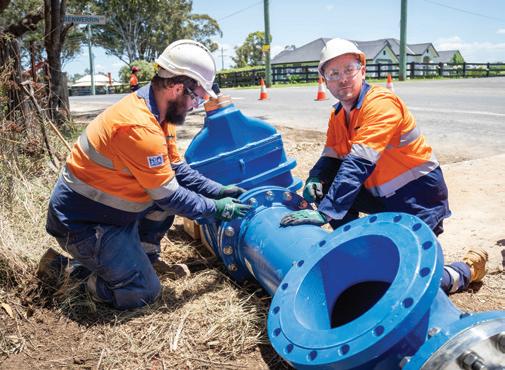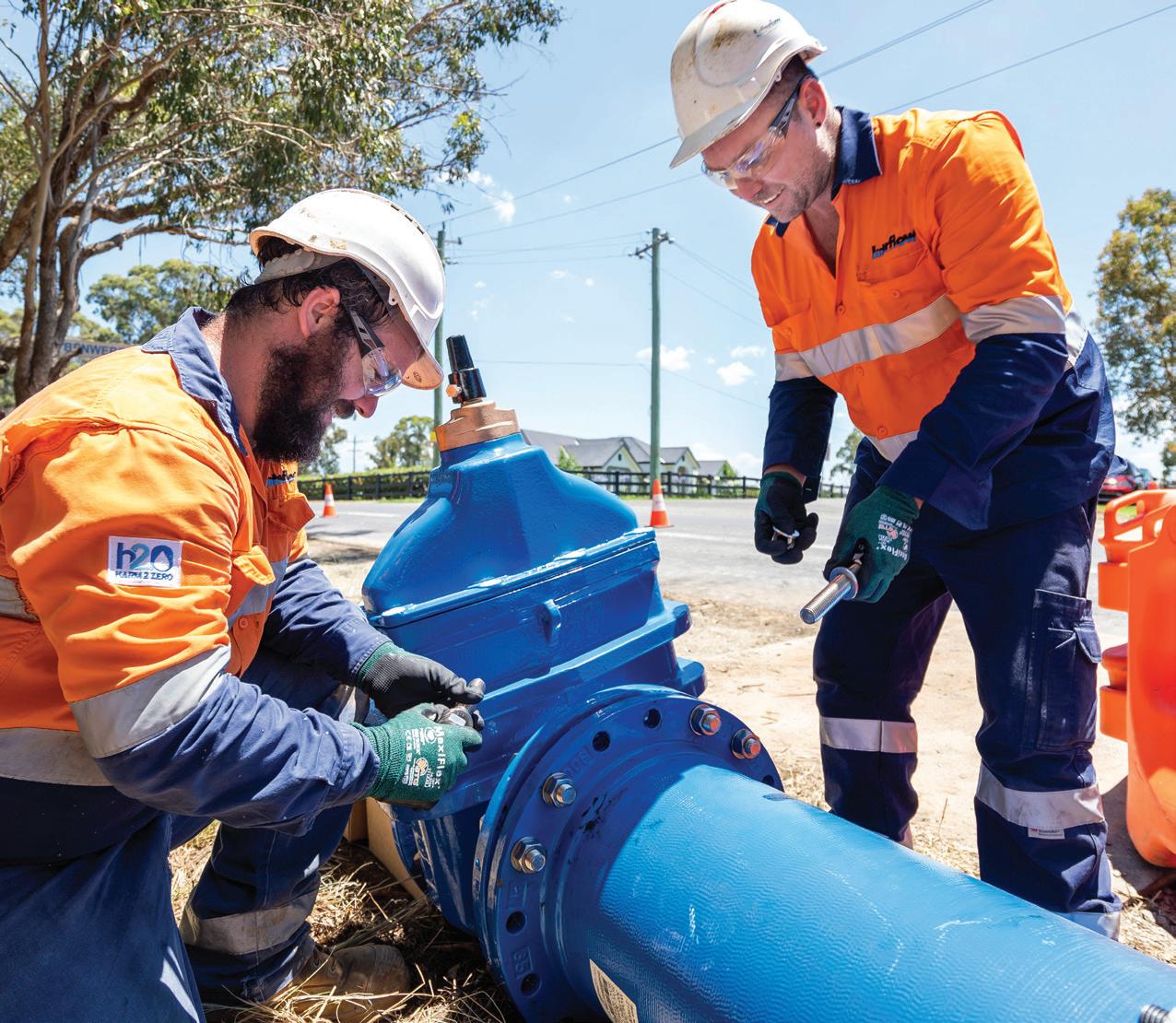
3 minute read
Holistic water management: navigating the infrastructure cliff
With so much of our water infrastructure due for renewal over the next decade, including asbestos cement pipes, success will come from deep insight into asset conditions and failure mechanisms.

Advertisement
Much has been made of the ‘infrastructure cliff’ identified in Infrastructure Australia’s Australian Infrastructure Audit 2019. The report highlighted that as we reach the end of our water assets’ expected service life, the cost of renewal – financial and otherwise – could overwhelm water authorities and their ability to meet customers’ expectations.
Since then, innovation and advancement has been occurring at pace in some parts of the sector. But it’s not always beneficial, and it often doesn’t solve the deeper problem.
Will Zillmann, National Product Manager at Interflow, said, “For example, a lot of newly marketed pipe-renewal technologies leave existing service connections in place, rather than replacing them. Those connections are typically the same age as the host pipe.”
But what about the root cause? How does a water authority get to a stage where it can feel confident about avoiding the infrastructure cliff by planning a proactive series of renewals?
Using asbestos cement pipes as a case study, Mr Zillmann said different failure mechanisms require different treatments.
“Asbestos cement (AC) pipes in general have an average service life of 40 to 70 years, and we’re coming into a period in which a lot of these assets are going to be starting to show significant signs of failure.”
There are many complications around the rehabilitation of AC pipes and pipe bursting AC water mains is no longer seen as an acceptable practice. As soon as you run a bursting head through an AC pipe, it changes from being non-friable to friable, and becomes much more dangerous.
WHAT’S THE SOLUTION?
The solution is the same for any type of pipe – it’s about developing a clear picture of the conditions and types of all of your existing assets and appreciating that they all have some form of value.
“As an industry, we don’t always look at things holistically and we’re often driven by short term budgets rather than matching budgets to solve the greater issues,” Mr Zillmann said.
“If a pipeline has had failures, we replace it. We see it as an isolated pipeline and attack the problem on a reactive basis. We don’t see that we’ve got this asset class that was installed in the same period of time, in that area, so they’ll all be at risk of failure.”
A holistic approach to renewing a larger area reduces unit cost and improves the long-term customer experience. It also means water pressures can be dialled back up if they have been reduced in the past to protect the infrastructure or reduce leakage.
In the case of AC pipes, a variety of trenched and trenchless techniques can be used to renew an entire service area, depending on the specific site and asset conditions, and the needs of water authorities and their customers.
Thorough knowledge of the condition of the entire network allows good and effective decisions to be made around these processes.
For more information on how Interflow can help your business solve this challenge, please visit www.interflow.com.au.



















